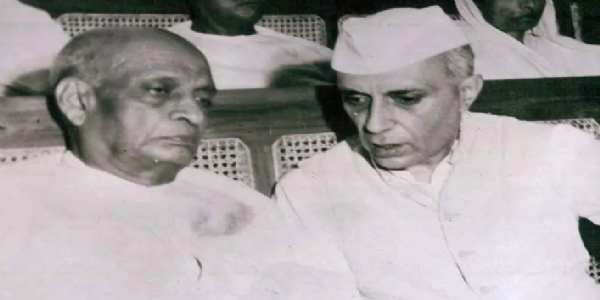Circular Economy & Development: Basis of Life Sustenance
Total Views | 200
The Development – with a connotation and mix of material advent of humanity – is seen more of a linear process in modern times. These progressions and the beliefs are so deeply ingrained in our minds, culture and the processes that we hardly ever scrutinize or even notice it. Nature by its character has never been linear. It always has been in Cyclic in Character, nature and process.

The Bhagavad-Gita (Chapter 08 and Verse 19) emphasizes that such cyclic changes of repeated creation, maintenance and destruction are an inherent, invariable feature of material existence.
Transliteration:
bhūta–grāmaḥ: the aggregate of all living entities; saḥ: these; eva: certainly; ayam: this; bhūtvā bhūtvā: repeatedly taking birth; pralīyate: is annihilated; rātri: of night; āgame: on the arrival; avaśaḥ: automatically; pārtha: O son of Pṛthā; prabhavati: is manifest; ahaḥ: of daytime; āgame: on the arrival.
This is the basis for sustainability and Cyclic nature of human and life sustenance. This is an economy where sustainability and not profitability is the main objective. The name given for such an economy is Circular Economy. In the run up to the Sustainable Development Goal (SDG) -2030 targets, the concept of the circular economy has regained attention, especially related to efforts to achieve a more sustainable society.
Sustainability, Circularity, Development & the Context
Modern day industries and manufacturing take raw materials from the nature and turn them into new products, which are then disposed into the environment after use. A 2012 World Bank report estimates that municipal waste generation will double over the next 20 years in low-income countries. We are already half way mark to that estimation. At present, India is the third largest consumers of raw materials and it is estimated to consume nearly 15 billion tonnes of material by 2030 with the current economic trends. The challenges from a growing population, rapid urbanization, climate change, environmental pollution etc. further give rise to an urgent need to have a development model which leads to the optimum utilization of resources.
Circular economy (CE) is an alternative system to highly extractive and resource intensive linear economy which is based on the principle of take-make-dispose. It is more of cyclical in nature. It stands on the strong foundation of minimizing the wastage at each life-cycle stage, while extracting the maximum value through reusing, repairing, recovering, remanufacturing, regenerating and finally replenishing the products and the materials at the end of each service value.
Traditionally, in an industrial set-up, the raw materials are collected and transformed into products which are then used by the consumers who subsequently discard them as a waste.
Due to such process, there is an increase in the Carbon footprint such practices prioritize profit over sustainability. However in Circular Economy or we may also call it as Cyclical Economy, the Design, production and consumption are all based around sustainability and long-term cyclical use of resources. In Cyclical Economy, the products must not have a limited shelf life and they should be built such that they can be repaired or recycled.
As enunciated by PM in Mann ki Baat of 29th January 2023, the Electronic and Electrical Equipment (EEE) manufacturing add to the e-waste problem for the country which is environmentally and economically unviable. As it is well known, the EEE sector is dependent on high material consumption of precious and rare metals. Metals like Iron, Copper, Silver, Gold, Aluminium, Manganese, Chromium & Zinc along with various rare earth elements are used. This necessitates the paradigm shift to a more circular approach for the sector. Certain Entrepreneurs and Start-ups have already started working on such re-cycling processes in Bengaluru and other places.
Further, Extended Producer Responsibility (EPR) under the E-Waste Management Rules, 2016 also emphasises on circularity principles by ensuring producers being responsible for cradle to cradle management of the products.
For promoting circularity in economy there are provisions of incentives for eco-design, modular structures in products to reduce fast obsolescence of products and resources, enhancing recycling and recovery of secondary resources which can be used in production processes to bring down costs and make the producers competitive.
NITI Aayog has entrusted the MeitY to formulate action plan for implementation of circular economy principles in the e-waste sector. Likewise, this approach will also focus on lifecycle of electronics including stages of raw material acquisition, design, manufacturing/production stage, consumption to end of life (e-waste) management, and secondary raw materials utilization.
The need of the hour is working towards a development model which leads to the optimum utilization of resources. With a growing population, rapid urbanization, climate change and environmental pollution, global community must move towards a circular economy.
A circular economy path presently being adopted by India could bring in substantial annual benefits consequently having a snowball effect on the economy. In the recent past, the Government has been actively formulating policies and promoting projects to drive the country towards a circular economy. It has already notified various rules, such as the Plastic Waste Management Rules, e-Waste Management Rules, Construction and Demolition Waste Management Rules, Metals Recycling Policy, etc.
Further, NITI Aayog also has undertaken several initiatives to ensure sustainable economic growth. Initiatives were taken to address the challenges in the utilization of waste as resource and to evolve a perspective on the recycling industry in India. Specifically, efforts were made in promoting the usage of fly ash and slag produced in the steel industry in other sectors.
Circular processes contributing to circularity can be grouped into 4 categories, from the most impactful to the least:
 To expedite the transition of the country from a linear to a circular economy, 11 committees have been formed—to be led by the concerned line ministries and comprising officials from MoEFCC and NITI Aayog, domain experts, academics and industry representatives—for 11 focus areas.
To expedite the transition of the country from a linear to a circular economy, 11 committees have been formed—to be led by the concerned line ministries and comprising officials from MoEFCC and NITI Aayog, domain experts, academics and industry representatives—for 11 focus areas.
The committees have been mandated to prepare comprehensive action plans for transitioning from a linear to a circular economy in their respective focus areas. They will also carry out the necessary modalities to ensure the effective implementation of their findings and recommendations.
_202301301224475693_H@@IGHT_406_W@@IDTH_641.png)
Such an approach may further strengthen the basis for sustainability of bhūta–grāmaḥ i.e. the aggregate of all living entities and ensure the sustenance of the cyclic nature of humans and life sustenance on the planet.
_202301301225202544_H@@IGHT_456_W@@IDTH_512.png)
Source: UNIDO

The Bhagavad-Gita (Chapter 08 and Verse 19) emphasizes that such cyclic changes of repeated creation, maintenance and destruction are an inherent, invariable feature of material existence.
भूतग्राम: स एवायं भूत्वा भूत्वा प्रलीयते ।
रात्र्यागमेऽवश: पार्थ प्रभवत्यहरागमे ॥ १९ ॥
bhūta-grāmaḥ sa evāyaṁ
bhūtvā bhūtvā pralīyate
rātry-āgame ’vaśaḥ pārtha
prabhavaty ahar-āgame
Transliteration:
bhūta–grāmaḥ: the aggregate of all living entities; saḥ: these; eva: certainly; ayam: this; bhūtvā bhūtvā: repeatedly taking birth; pralīyate: is annihilated; rātri: of night; āgame: on the arrival; avaśaḥ: automatically; pārtha: O son of Pṛthā; prabhavati: is manifest; ahaḥ: of daytime; āgame: on the arrival.
This is the basis for sustainability and Cyclic nature of human and life sustenance. This is an economy where sustainability and not profitability is the main objective. The name given for such an economy is Circular Economy. In the run up to the Sustainable Development Goal (SDG) -2030 targets, the concept of the circular economy has regained attention, especially related to efforts to achieve a more sustainable society.
Sustainability, Circularity, Development & the Context
Modern day industries and manufacturing take raw materials from the nature and turn them into new products, which are then disposed into the environment after use. A 2012 World Bank report estimates that municipal waste generation will double over the next 20 years in low-income countries. We are already half way mark to that estimation. At present, India is the third largest consumers of raw materials and it is estimated to consume nearly 15 billion tonnes of material by 2030 with the current economic trends. The challenges from a growing population, rapid urbanization, climate change, environmental pollution etc. further give rise to an urgent need to have a development model which leads to the optimum utilization of resources.
Circular economy (CE) is an alternative system to highly extractive and resource intensive linear economy which is based on the principle of take-make-dispose. It is more of cyclical in nature. It stands on the strong foundation of minimizing the wastage at each life-cycle stage, while extracting the maximum value through reusing, repairing, recovering, remanufacturing, regenerating and finally replenishing the products and the materials at the end of each service value.
Traditionally, in an industrial set-up, the raw materials are collected and transformed into products which are then used by the consumers who subsequently discard them as a waste.
Due to such process, there is an increase in the Carbon footprint such practices prioritize profit over sustainability. However in Circular Economy or we may also call it as Cyclical Economy, the Design, production and consumption are all based around sustainability and long-term cyclical use of resources. In Cyclical Economy, the products must not have a limited shelf life and they should be built such that they can be repaired or recycled.
As enunciated by PM in Mann ki Baat of 29th January 2023, the Electronic and Electrical Equipment (EEE) manufacturing add to the e-waste problem for the country which is environmentally and economically unviable. As it is well known, the EEE sector is dependent on high material consumption of precious and rare metals. Metals like Iron, Copper, Silver, Gold, Aluminium, Manganese, Chromium & Zinc along with various rare earth elements are used. This necessitates the paradigm shift to a more circular approach for the sector. Certain Entrepreneurs and Start-ups have already started working on such re-cycling processes in Bengaluru and other places.
Further, Extended Producer Responsibility (EPR) under the E-Waste Management Rules, 2016 also emphasises on circularity principles by ensuring producers being responsible for cradle to cradle management of the products.
For promoting circularity in economy there are provisions of incentives for eco-design, modular structures in products to reduce fast obsolescence of products and resources, enhancing recycling and recovery of secondary resources which can be used in production processes to bring down costs and make the producers competitive.
NITI Aayog has entrusted the MeitY to formulate action plan for implementation of circular economy principles in the e-waste sector. Likewise, this approach will also focus on lifecycle of electronics including stages of raw material acquisition, design, manufacturing/production stage, consumption to end of life (e-waste) management, and secondary raw materials utilization.
The need of the hour is working towards a development model which leads to the optimum utilization of resources. With a growing population, rapid urbanization, climate change and environmental pollution, global community must move towards a circular economy.
A circular economy path presently being adopted by India could bring in substantial annual benefits consequently having a snowball effect on the economy. In the recent past, the Government has been actively formulating policies and promoting projects to drive the country towards a circular economy. It has already notified various rules, such as the Plastic Waste Management Rules, e-Waste Management Rules, Construction and Demolition Waste Management Rules, Metals Recycling Policy, etc.
Further, NITI Aayog also has undertaken several initiatives to ensure sustainable economic growth. Initiatives were taken to address the challenges in the utilization of waste as resource and to evolve a perspective on the recycling industry in India. Specifically, efforts were made in promoting the usage of fly ash and slag produced in the steel industry in other sectors.
Circular processes contributing to circularity can be grouped into 4 categories, from the most impactful to the least:

The committees have been mandated to prepare comprehensive action plans for transitioning from a linear to a circular economy in their respective focus areas. They will also carry out the necessary modalities to ensure the effective implementation of their findings and recommendations.
_202301301224475693_H@@IGHT_406_W@@IDTH_641.png)
Such an approach may further strengthen the basis for sustainability of bhūta–grāmaḥ i.e. the aggregate of all living entities and ensure the sustenance of the cyclic nature of humans and life sustenance on the planet.
_202301301225202544_H@@IGHT_456_W@@IDTH_512.png)
Source: UNIDO








